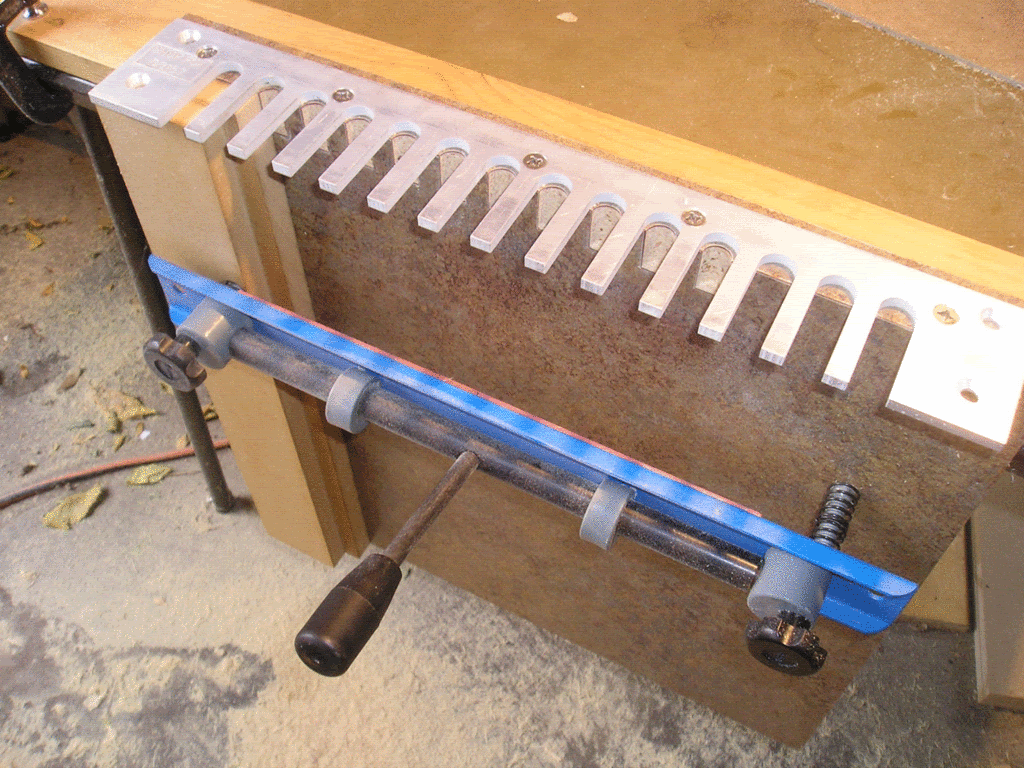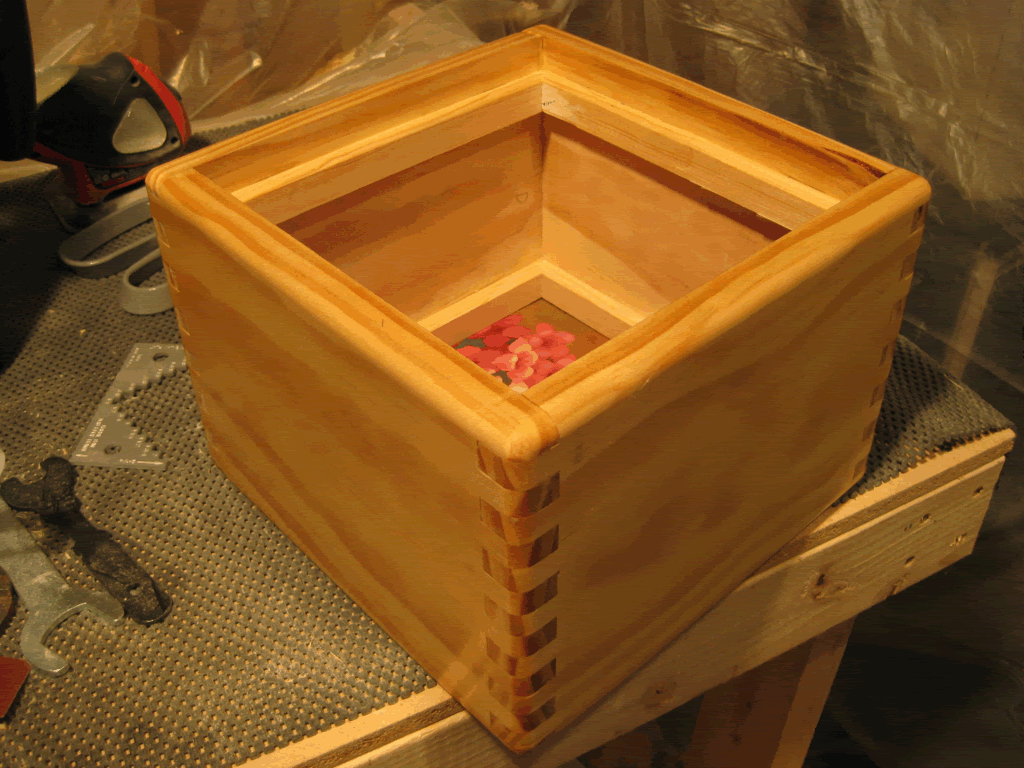For those of you that may have a tablesaw and a dado blade
you can make the box joints pretty easily with an easy-to-make
fixture. For some examples, see :
Using a Box Joint Jig - NewWoodworker.com LLC
Song of the Great Lakes - Simple Box Joint Jig
toolbox_good_hands.shtml
Shopsmith - Articles and Projects - Use & Sharpening Instructions for Hand Scrapers
I'd put a big block of wood in back of the fixture to prevent
dado'ing your thumb...
Paul P
you can make the box joints pretty easily with an easy-to-make
fixture. For some examples, see :
Using a Box Joint Jig - NewWoodworker.com LLC
Song of the Great Lakes - Simple Box Joint Jig
toolbox_good_hands.shtml
Shopsmith - Articles and Projects - Use & Sharpening Instructions for Hand Scrapers
I'd put a big block of wood in back of the fixture to prevent
dado'ing your thumb...
Paul P

 But a) I need a new bushing anyway and Porter Cable has the only commonly available system. You gotta special order the crappy Ryobi ones. b) Their bushing system looks to be a much better design c)Maybe the extra 1/4 hp will help? Maybe not. d) I'm hoping it will be constructed a little more stabile and handle jerking around without having the height shift.
But a) I need a new bushing anyway and Porter Cable has the only commonly available system. You gotta special order the crappy Ryobi ones. b) Their bushing system looks to be a much better design c)Maybe the extra 1/4 hp will help? Maybe not. d) I'm hoping it will be constructed a little more stabile and handle jerking around without having the height shift.
Comment